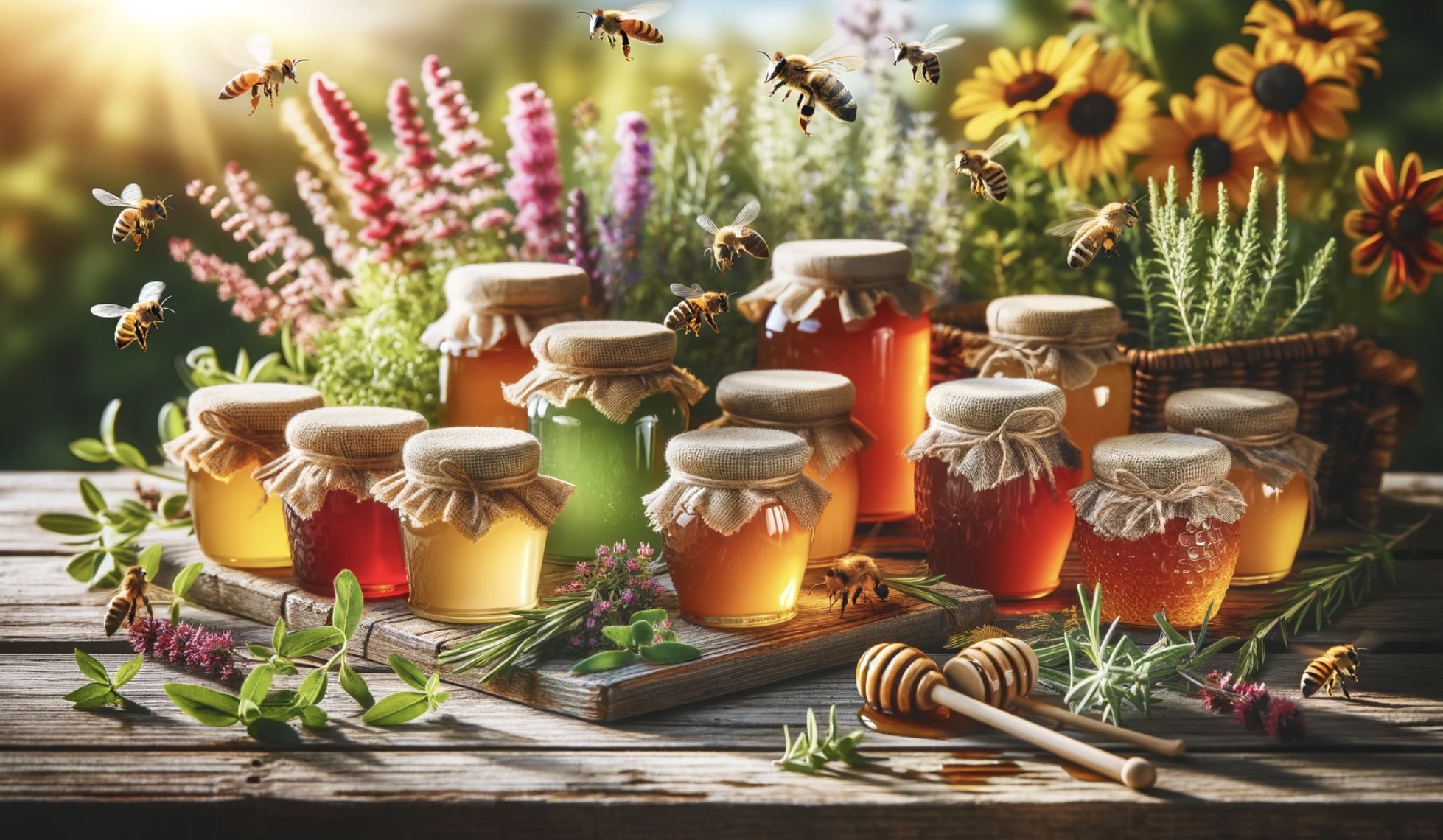Mead is a delightful alcoholic drink that can be brewed at home using honey, water, and yeast, but did you know you can infuse it with fruit for added flavor?
Let me introduce you to a Mango Mead recipe that will transform your homebrewing experience.
Introduction to Mead and Fruit Mead
Mead, known as the nectar of the gods, is believed to be the oldest known alcoholic beverage, with its origin dating back thousands of years.

The beauty of mead lies in its simplicity and versatility. At its core, mead is simply fermented honey and water. However, by adding different fruits or spices, you can create an endless array of variations, known as melomels.
One of my favorite melomels is Mango Mead. The sweet, tropical notes of mango complement the rich, floral honey perfectly, resulting in a refreshing and complex flavor profile.
Necessary Ingredients for Mango Mead
Creating your own Mango Mead is easier than you might think, and it all starts with the right ingredients. For this recipe, you will need:
- 3 pounds of honey (preferably raw and unfiltered)
- 1 large ripe mango
- 1 gallon of water
- 1 packet of wine yeast (I recommend Lalvin 71B)
- 1 teaspoon of yeast nutrient
Each ingredient plays a vital role in the flavor and quality of your mead. The quality of your honey will directly impact the taste of your brew, so choose it wisely.

The mango should be ripe and juicy, and the yeast should be specifically for wine or mead to ensure proper fermentation.
Equipment Needed
Having the right equipment is equally important as having the right ingredients. Here’s what you will need:
- A large pot
- A 1-gallon glass carboy or fermentation vessel
- A funnel
- An airlock and stopper
- A thermometer
- A hydrometer
- A racking cane and tubing
- Sanitizer
Remember, in brewing, cleanliness is paramount. All equipment that comes into contact with the mead must be thoroughly sanitized to prevent unwanted bacteria and wild yeast from spoiling your brew.
The Brewing Process
Now, let’s get to the fun part – brewing! The process is simple and straightforward, perfect for both beginners and seasoned homebrewers.
1. Sanitize everything. Before you start, sanitize all of your equipment. This will prevent any unwanted bacteria or wild yeast from interfering with your mead.
2. Prepare the must. The must is simply the mixture of honey, water, and fruit that will be fermented. In a large pot, heat the water to about 160°F and then turn off the heat. Stir in the honey until it dissolves completely. Add the chopped mango and let it steep as the must cools.
3. Transfer and pitch the yeast. Once the must is at room temperature, transfer it to your sanitized fermentation vessel using a funnel. Add the yeast and yeast nutrient, then give it a good shake to aerate the must.
4. Fermentation. Fit the airlock and stopper onto the fermentation vessel. This will allow CO2 to escape during fermentation while preventing anything from getting in. After pitching the yeast, fermentation should begin within 24-48 hours. You’ll know it’s working when you see bubbles in the airlock.
5. Secondary fermentation and aging. After about 2-3 weeks, or when the vigorous fermentation has subsided, it’s time to rack the mead. This means transferring the mead from the primary fermentation vessel to a secondary one, leaving behind the sediment. This helps to clear the mead and improve the flavor.
6. Bottling. Once your mead is clear and stable, it’s time to bottle it. Use a siphon to transfer the mead from the fermentation vessel to your bottles, being careful not to disturb any sediment at the bottom.
7. Enjoy! After all your hard work, now comes the best part – enjoying your homemade Mango Mead!
Troubleshooting Common Problems
While brewing mead is simple, sometimes problems can arise. Here are some common issues and how to fix them:
– Fermentation isn’t starting. Make sure your must is at room temperature before pitching the yeast, and that the yeast is properly hydrated according to the package instructions.
– The mead has a bad smell or taste. This could be due to an infection or oxidation. Be diligent with sanitizing your equipment and avoid exposing your mead to air during fermentation and aging.
– The mead is too sweet or too dry. This is often a matter of personal preference. You can adjust the sweetness of your mead by using more or less honey, or by stopping the fermentation early.
The Joy of Homebrewing
There’s something incredibly satisfying about brewing your own mead. Not only do you get to enjoy a delicious homemade beverage, but you also get to partake in a tradition that goes back thousands of years.

The process of brewing mead is a labor of love, and the joy of tasting your own brew is absolutely worth the effort.
Conclusion
To sum it up, brewing Mango Mead at home is a rewarding and enjoyable endeavor. With the right ingredients, equipment, and a bit of patience, you can create a delicious, complex, and refreshing beverage.
Here are some key takeaways from this post:
1. Mead is a versatile alcoholic beverage made from fermented honey and water.
2. Mango Mead is a type of melomel, which is mead infused with fruit.
3. The quality of your honey directly impacts the taste of your mead.
4. Cleanliness is paramount in brewing.
5. Fermentation should begin within 24-48 hours after pitching the yeast.
6. Racking helps to clear the mead and improve the flavor.
7. Troubleshooting common problems is part of the homebrewing experience.
8. Brewing mead is a labor of love.
Personally, I’ve found the process of brewing Mango Mead to be an enriching and rewarding endeavor. There’s always something new to learn and experiment with, and the end result is a unique and delicious drink that’s worth the effort. Happy brewing!
FAQs
How to make mead that isn t sweet?
To make mead that isn’t sweet, you can adjust the fermentation process. Start by using less honey during the initial fermentation, as less honey means less sweetness. Additionally, you can choose a yeast strain that has a higher alcohol tolerance, which will allow the yeast to consume more of the sugars and produce a drier mead. Lastly, you can consider adding some acidity to balance the flavors and reduce the perception of sweetness.
What is fruit flavored mead called?
Fruit flavored mead is commonly known as melomel.
Why is my mead sweet?
Your mead is sweet because it contains a significant amount of residual sugars.
Does more honey make mead sweeter?
Yes, adding more honey to mead will generally make it sweeter.
How much honey for sweet mead?
The amount of honey needed for sweet mead depends on personal preference. Generally, a common ratio is about 2 to 3 pounds of honey per gallon of water. However, you can adjust the amount of honey to make it sweeter or less sweet according to your taste.
How much honey do I use for mead?
The amount of honey you use for mead depends on the desired sweetness and alcohol content. A general guideline is to use around 2.5 to 3 pounds of honey per gallon of water for a standard mead.




